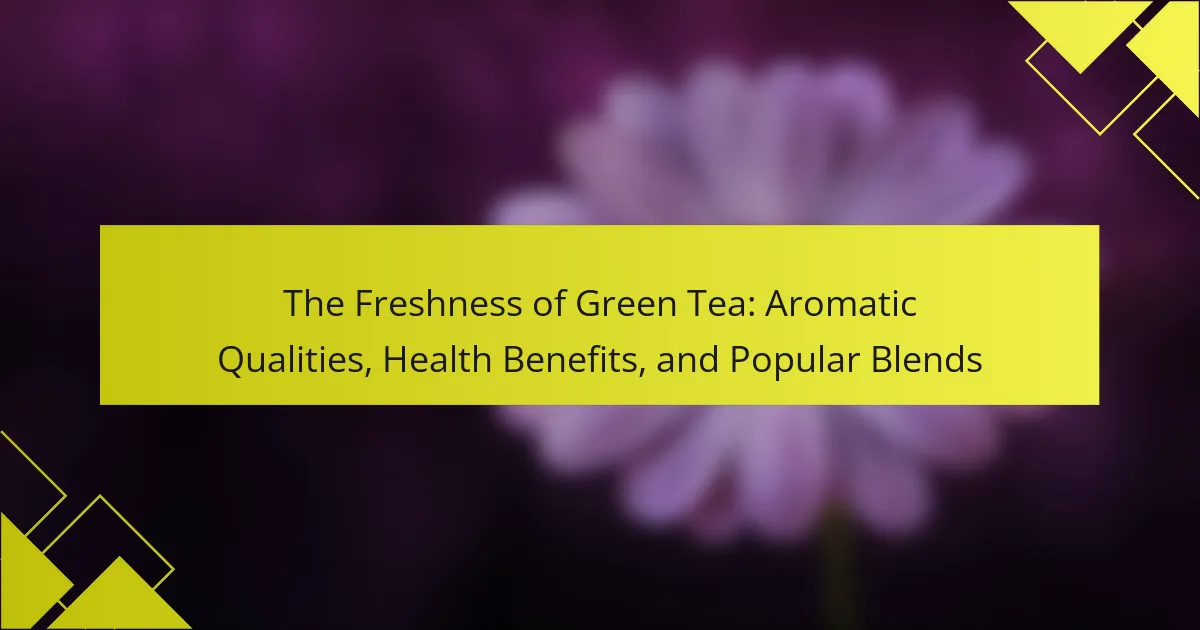
What is Neroli and Where Does It Come From?
Neroli is an essential oil derived from the flowers of the bitter orange tree (Citrus aurantium). The oil is known for its sweet, floral fragrance. Neroli is primarily sourced from regions in the Mediterranean, particularly in Italy and Tunisia. The extraction process typically involves steam distillation of the fresh blossoms. This method preserves the delicate aroma and properties of the flowers. Historically, Neroli has been used in perfumes and aromatherapy for its calming effects. Its popularity dates back to the 17th century when it was named after Princess Nerola of Italy.
How is Neroli Extracted from the Bitter Orange Tree?
Neroli is extracted from the bitter orange tree through steam distillation. This process involves collecting the blossoms of the bitter orange tree. The flowers are typically harvested in the morning when they are most fragrant. After harvesting, the blossoms are subjected to steam, which helps release their essential oils. The steam carries the oils away, which then condense into a liquid form. This liquid is collected and separated, resulting in neroli essential oil. The extraction yields a highly aromatic oil used in perfumery and aromatherapy. Steam distillation is a common method due to its efficiency and ability to preserve the oil’s delicate scent.
What are the key steps in the Neroli extraction process?
The key steps in the Neroli extraction process include harvesting, steam distillation, and cooling. First, Neroli flowers are handpicked from the bitter orange tree. This process usually occurs during the early morning when the flowers are most fragrant. Next, the harvested flowers undergo steam distillation. Steam passes through the flowers, extracting essential oils. The steam then condenses, and the oil separates from the water. Finally, the collected oil is cooled and stored in dark glass containers to preserve its quality. This method ensures the retention of Neroli’s delicate fragrance and therapeutic properties.
What makes the extraction of Neroli unique compared to other essential oils?
Neroli extraction is unique due to its method and the source of its oil. It is derived from the blossoms of the bitter orange tree (Citrus aurantium). This extraction typically uses steam distillation or solvent extraction. The process requires a large number of blossoms to yield a small amount of oil. Approximately 1,000 pounds of blossoms produce only about 1 pound of essential oil. This high input-to-output ratio contributes to its rarity and cost. Additionally, Neroli oil is known for its delicate and complex fragrance profile. Its scent is often described as sweet, floral, and slightly spicy. These characteristics make Neroli distinct among essential oils.
What are the Distinctive Floral Notes of Neroli?
Neroli possesses distinctive floral notes characterized by a fresh, sweet, and slightly citrus scent. These notes are derived from the blossoms of the bitter orange tree (Citrus aurantium). Neroli’s aroma is often described as uplifting and calming. It features a complex profile that includes hints of green and spicy undertones. The floral notes of neroli are widely used in perfumery and aromatherapy. Studies indicate that neroli can promote relaxation and reduce anxiety. Its unique scent profile makes it a popular choice in luxury fragrances.
How do the floral notes of Neroli compare to other floral oils?
Neroli has a distinct floral note that is often described as sweet, fresh, and slightly citrusy. This differentiates it from other floral oils like jasmine and rose, which have heavier, more complex scents. Neroli’s aroma is lighter and more uplifting, making it popular in aromatherapy for promoting relaxation. In contrast, jasmine is often associated with sensuality, while rose conveys a more romantic essence. The unique profile of Neroli comes from its extraction from orange blossoms, adding a bright quality that is less common in other floral oils. This freshness can enhance mood and reduce anxiety, while other floral oils may focus more on emotional depth or richness.
What are the sensory characteristics that define Neroli’s fragrance?
Neroli’s fragrance is characterized by its bright, floral, and citrusy notes. It has a sweet, fresh aroma that is uplifting and invigorating. The scent profile includes hints of green, spicy, and woody undertones. Neroli is often described as having a light and airy quality. Its complexity comes from the combination of these various notes. Studies show that Neroli essential oil can promote relaxation and reduce stress. This makes its fragrance not only pleasant but also beneficial for well-being. The sensory experience of Neroli is often associated with feelings of joy and tranquility.
What Benefits Does Neroli Offer for Well-being?
Neroli offers several benefits for well-being, primarily through its calming and uplifting properties. It is known to reduce anxiety and stress levels, promoting a sense of relaxation. Studies indicate that inhaling neroli essential oil can lower heart rate and blood pressure, contributing to emotional stability. Additionally, neroli has been linked to improved sleep quality, aiding those with insomnia. Its antidepressant effects may enhance mood and overall mental health. Furthermore, neroli can support skin health, providing hydration and reducing the appearance of scars. These benefits make neroli a valuable addition to wellness routines.
How does Neroli contribute to emotional wellness?
Neroli contributes to emotional wellness by promoting relaxation and reducing anxiety. Its scent has been shown to lower cortisol levels, which are associated with stress. Studies indicate that inhaling neroli essential oil can enhance mood and alleviate feelings of depression. Research published in the Journal of Alternative and Complementary Medicine highlights its calming effects on the nervous system. Additionally, neroli is often used in aromatherapy for its uplifting properties. This floral oil can improve overall emotional balance and well-being.
What physical health benefits are associated with Neroli use?
Neroli offers several physical health benefits. It is known for its anti-inflammatory properties, which can help reduce swelling and discomfort. Neroli also acts as an antiseptic, aiding in the prevention of infections. Additionally, it can promote relaxation and reduce stress, which may lower blood pressure. Studies suggest that the scent of neroli can enhance mood and alleviate anxiety. Furthermore, neroli oil is used in skincare for its ability to improve skin elasticity and reduce the appearance of scars. These benefits make neroli a valuable addition to holistic health practices.

How Can Neroli Be Used Effectively?
Neroli can be used effectively through various methods. It is commonly used in aromatherapy for its calming effects. Diffusing neroli oil can promote relaxation and reduce anxiety. Additionally, it can be applied topically when diluted with a carrier oil. This method helps improve skin health and reduce the appearance of scars. Neroli is also beneficial in skincare products for its anti-aging properties. Incorporating it into a massage oil can enhance relaxation during a massage session. Studies indicate that neroli oil can lower blood pressure and heart rate, further supporting its calming effects.
What are the Different Forms of Neroli Available?
Neroli is available in several forms, including essential oil, hydrosol, and absolute. Essential oil is the most concentrated form, extracted from the blossoms of the bitter orange tree. Hydrosol is a diluted form, created during the distillation process, retaining some of the oil’s properties. Neroli absolute is a thicker, more viscous product, often used in perfumery. Each form has unique applications and benefits. Essential oil is commonly used in aromatherapy. Hydrosol can be used as a [censured] mist or toner. Absolute is favored in high-end perfumes for its rich scent.
How do the various forms of Neroli (oil, spray, etc.) differ in use?
Neroli oil and Neroli spray differ primarily in their application methods and concentration. Neroli oil is typically more concentrated and used for direct application on the skin. It is often diluted with a carrier oil for safe topical use. Neroli spray, on the other hand, is a lighter formulation designed for easy misting. It is commonly used for room fragrance or as a body mist. The oil provides deeper therapeutic benefits due to its potency, while the spray offers convenience and a refreshing scent. Both forms retain the characteristic aroma of Neroli, but their uses cater to different preferences and needs.
Which form of Neroli is best suited for specific applications?
Neroli essential oil is best suited for aromatherapy applications due to its calming properties. The oil is extracted from the blossoms of the bitter orange tree. This form of Neroli is known for reducing anxiety and promoting relaxation. It can also enhance mood and improve sleep quality. For skincare, Neroli hydrosol is effective in soothing irritated skin. This form retains the beneficial properties of the essential oil while being gentler. Neroli oil is often used in perfumes for its sweet, floral scent. Its unique aroma makes it a popular choice in high-end fragrances. Each form serves distinct purposes based on the desired application.
What are the Best Practices for Applying Neroli?
The best practices for applying neroli include using it in diluted form to prevent skin irritation. Neroli oil should be mixed with a carrier oil, like jojoba or coconut oil, before application. This dilution typically involves a ratio of one part neroli oil to three parts carrier oil. Applying neroli to pulse points, such as wrists and neck, enhances its aromatic benefits. For aromatherapy, adding a few drops to a diffuser can create a calming atmosphere. It is also beneficial to perform a patch test before widespread use to check for allergic reactions. Research indicates that neroli has mood-enhancing properties, making it effective for stress relief when inhaled or applied topically.
How can Neroli be incorporated into daily routines?
Neroli can be incorporated into daily routines through various methods. One way is by adding neroli essential oil to a diffuser. This promotes relaxation and enhances mood. Another method is to mix neroli oil with a carrier oil for topical application. This can nourish the skin and provide aromatherapy benefits. Neroli can also be added to bath products for a soothing experience. Using neroli-infused lotions or creams can enhance daily skincare routines. Additionally, incorporating neroli in herbal teas can offer calming effects. These methods leverage neroli’s properties to improve overall well-being.
What safety precautions should be taken when using Neroli?
Neroli oil should be used with caution to ensure safety. It is recommended to perform a patch test before applying it to the skin. Diluting Neroli oil with a carrier oil is essential to prevent skin irritation. Pregnant individuals should avoid using Neroli oil due to potential effects on pregnancy. People with allergies to citrus should refrain from using Neroli. Avoid direct sunlight after applying Neroli oil to the skin, as it may cause photosensitivity. Always consult a healthcare professional before use, especially for those with existing health conditions.

What Tips Can Enhance the Experience of Using Neroli?
To enhance the experience of using neroli, consider using it in aromatherapy. Neroli essential oil can promote relaxation and reduce anxiety. Diffusing neroli oil in a room creates a calming atmosphere. You can also blend neroli with carrier oils for topical application. This method allows for skin absorption and can improve mood. Additionally, incorporating neroli into a bath can provide a soothing experience. Research shows that scents like neroli can lower stress levels and improve emotional well-being. Finally, using neroli in meditation can deepen your practice by promoting mindfulness.
How can Neroli be blended with other essential oils for enhanced benefits?
Neroli can be blended with other essential oils to enhance its therapeutic benefits. Combining Neroli with lavender promotes relaxation and stress relief. When mixed with bergamot, it can elevate mood and reduce anxiety. Neroli and sandalwood together create a calming and grounding effect. Blending with ylang-ylang can enhance emotional balance and harmony. Each combination leverages the unique properties of the oils involved. For example, studies show that lavender oil effectively reduces anxiety levels. This supports the effectiveness of blending Neroli with lavender for stress relief.
What combinations work best to amplify Neroli’s effects?
Combining Neroli with bergamot and jasmine enhances its calming effects. Bergamot’s citrus notes complement Neroli’s floral aroma. This combination promotes relaxation and reduces anxiety. Jasmine adds a sweet, soothing quality. Together, they create a balanced fragrance profile. Research indicates that these combinations can enhance mood and emotional well-being. The synergy between these essential oils amplifies their therapeutic properties.
How can one create personalized Neroli-infused products at home?
To create personalized Neroli-infused products at home, start by gathering Neroli essential oil. Combine it with a carrier oil like jojoba or sweet almond oil. Use a ratio of about 10-15 drops of Neroli oil per ounce of carrier oil. For added fragrance, consider blending in other essential oils such as lavender or bergamot. Store the mixture in a dark glass bottle to protect it from light. Allow the infusion to sit for at least 48 hours for optimal scent development. Shake the bottle gently before each use to mix the oils. This method is commonly used in DIY skincare and aromatherapy practices.
What Common Mistakes Should Be Avoided When Using Neroli?
Common mistakes to avoid when using neroli include overuse, which can lead to skin irritation. Neroli is potent, and a few drops are often sufficient. Diluting neroli essential oil in a carrier oil is essential for topical application. Not doing so can cause adverse reactions on sensitive skin. Additionally, applying neroli directly to the skin without a patch test is unwise. This test helps identify any allergic reactions beforehand. Using neroli in poorly ventilated areas can also be problematic. Proper ventilation ensures that the aroma is pleasant and not overwhelming. Lastly, neglecting to store neroli oil in a cool, dark place can degrade its quality. Proper storage maintains its therapeutic properties.
What are the typical pitfalls in the application of Neroli?
Typical pitfalls in the application of Neroli include overuse and improper dilution. Overuse can lead to skin irritation or allergic reactions. Neroli oil is potent and should be used sparingly. Improper dilution with carrier oils can diminish its therapeutic effects. Users often apply Neroli directly without dilution, risking adverse reactions. Additionally, applying Neroli before sun exposure can increase photosensitivity. This can lead to skin damage or irritation. Understanding these pitfalls is essential for safe and effective use.
How can these mistakes impact the overall experience of using Neroli?
Mistakes in using Neroli can significantly diminish the overall experience. Incorrect dilution can lead to skin irritation or reduced effectiveness. Overapplication may overwhelm the senses, making the fragrance too strong. Poor storage conditions can degrade the oil, affecting its aroma and therapeutic properties. Misunderstanding the proper application methods can result in diminished benefits. For example, applying Neroli without a carrier oil may cause adverse reactions. Each of these mistakes negatively impacts the intended soothing and uplifting effects of Neroli.
Neroli is an essential oil extracted from the blossoms of the bitter orange tree, known for its sweet, floral fragrance and calming properties. The article explores the extraction process, highlighting steam distillation as the primary method, and details the unique characteristics of Neroli’s scent profile compared to other floral oils. It discusses the various benefits of Neroli for emotional and physical well-being, including its ability to reduce anxiety and improve skin health. Additionally, the article provides practical tips for effective use, including different forms of Neroli, application methods, safety precautions, and common mistakes to avoid.



